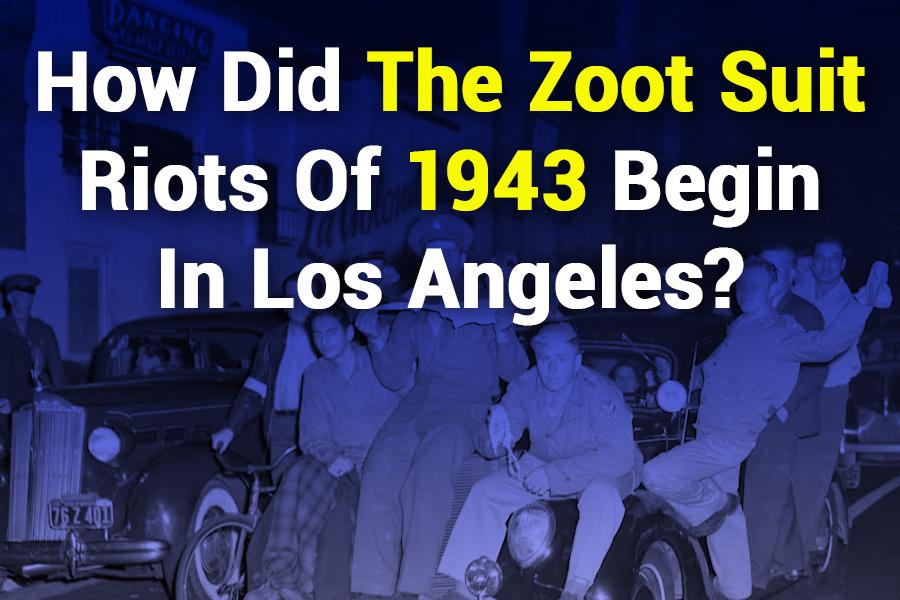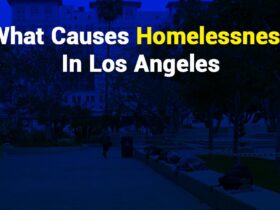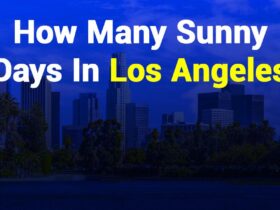The Zoot Suit Riots of 1943 remain one of the most vivid examples of racial tension and civil unrest in American history. But how did they begin in Los Angeles? To understand the roots of this violent outbreak, one must look beyond fashion and focus on the intersection of race, identity, war, and media.
In wartime Los Angeles, Mexican-American youth—many of whom wore oversized, flashy “zoot suits”—were increasingly targeted by law enforcement and the press as unpatriotic and criminal. The rising tensions between servicemen stationed in LA and local Latino communities were fueled by discriminatory policing, inflammatory media coverage, and cultural misunderstandings. These tensions erupted in June 1943 when a confrontation between sailors and zoot suiters became a weeklong series of attacks.
This article will explore how did the Zoot Suit Riots of 1943 began in Los Angeles, examining the historical, social, and political triggers that led to one of the most racially charged events of the 20th century.
How did the Zoot Suit Riots of 1943 begin in Los Angeles?
The Zoot Suit Riots began when tensions between White servicemen and Mexican-American youth escalated into violence, driven by racism, media bias, and cultural conflict.
What Was the Social Climate in Los Angeles Before 1943?
In the early 1940s, Los Angeles was defined by growth, war, and deep racial divisions. The influx of military personnel due to World War II drastically altered the city’s social dynamics. At the same time, Mexican-American communities—especially youth—were increasingly visible, both culturally and politically. Zoot suits, wide-legged outfits popular among Chicano youth, symbolized resistance and pride. However, to many in white, mainstream society, the suits represented rebellion, crime, and anti-American sentiment.
The media played a significant role in shaping public opinion. Sensationalist stories often exaggerated crimes allegedly committed by young Latinos, stoking fear and resentment among the general population and military personnel. At the same time, discriminatory policing practices and racially motivated arrests increased tensions. Law enforcement and civic leaders often portrayed Mexican-American communities as breeding grounds for unrest.
These factors laid the groundwork for conflict. Servicemen, many far from home, were often hostile to local minority youth who appeared to challenge their values. Tensions simmered in nightclubs, on public transportation, and the streets. It was only a matter of time before these tensions exploded. Understanding how did the Zoot Suit Riots of 1943 began in Los Angeles requires a close look at this volatile pre-riot atmosphere.
Why Were Zoot Suits So Controversial in 1940s Los Angeles?
The zoot suit wasn’t just a fashion trend in 1940s Los Angeles but a lightning rod for cultural tension, patriotism, and racial identity.
The Zoot Suit as Cultural Defiance
In 1940s Los Angeles, the zoot suit became more than just a fashion trend—a cultural symbol, especially among Mexican-American youth. Wearing the oversized suits with long coats and baggy pants was a form of rebellion against the pressure to assimilate. For many, it was a proud assertion of Chicano identity and an embrace of urban style rooted in jazz culture and street expression. It wasn’t just clothing—it was political.
Mainstream Backlash and Wartime Tensions
While Mexican-American youth saw empowerment in the zoot suit, the broader American public viewed it differently. During World War II, fabric was rationed for the war effort, and the voluminous nature of the zoot suit was considered wasteful and unpatriotic. Critics accused wearers of being selfish and defying national unity. This perceived extravagance fueled resentment among white citizens and servicemen alike.
Media Framing and Stereotyping
The media played a significant role in deepening social divides. Newspaper headlines regularly associated zoot suiters with gang violence, crime, and moral decay. They exaggerated conflicts and framed the youth culture as a threat, amplifying public fear and racial prejudice.
Police Profiling and Military Hostility
Law enforcement often treated zoot suiters with suspicion, using their outfits as justification for stop-and-search tactics. Meanwhile, servicemen stationed in LA saw the suits as provocative and disrespectful, intensifying confrontations that contributed to the eventual riots.
What Were the Immediate Triggers of the Zoot Suit Riots?
The violent eruption of the Zoot Suit Riots in June 1943 did not occur in a vacuum. Tensions had been simmering for months between servicemen and young Mexican-Americans. A combination of cultural misunderstanding, wartime stress, and racial prejudice created the perfect storm for conflict. Here are the key events that directly triggered the riots:
- Tensions Between Sailors and Mexican-American Youth: Regular confrontations occurred on the streets of Los Angeles, especially in downtown and East LA. Cultural clashes, fueled by racial stereotyping and youth rebellion, created an ongoing friction.
- Beating of U.S. Sailors: A highly publicized incident claimed that a group of zoot suiters had attacked some sailors. Though the facts were unclear, the spark ignited mass retaliation.
- Lack of Police Intervention: Law enforcement often ignored threats against Mexican-American communities. In some cases, officers appeared complicit by failing to arrest attackers or by arresting the victims instead.
- Media’s Role in Escalation: Local newspapers exaggerated stories, portraying zoot suiters as gang members and criminals, further inflaming public sentiment.
- Organized Attacks by Servicemen: Groups of sailors roamed the streets looking for zoot suiters, assaulting them and stripping them of their iconic attire.
- No Legal Consequences: Few servicemen were held accountable, emboldening further violence and revealing systemic bias.
How Did the Riots Impact Los Angeles Communities?
The Zoot Suit Riots left a profound mark on Los Angeles, particularly within Mexican-American neighborhoods. Hundreds of youth were injured, stripped of their clothing, or arrested, while white servicemen were rarely charged. The riots exacerbated racial tensions and shattered trust in law enforcement.
Parents feared for their children’s safety. Community leaders and civil rights organizations condemned the violence and demanded federal intervention. Although the riots were short-lived, the psychological impact on Latino families endured for generations.
In the aftermath, city officials banned zoot suits in some areas, sparking debates about civil liberties and cultural suppression. Meanwhile, the riots highlighted the urgent need for racial justice, representation, and reform in policing and the media.
The events of June 1943 served as a turning point in Latino activism. Many who experienced the riots would later become involved in civil rights movements, using their stories as a call for change. Understanding how did the Zoot Suit Riots of 1943 began in Los Angeles also means recognizing their long-term social consequences.
Where Did the Zoot Suit Riots Unfold Across Los Angeles?
The Zoot Suit Riots of 1943 were not limited to one area—they spread rapidly throughout Los Angeles, affecting multiple communities and public spaces. Below is a detailed look at where the violence unfolded:
- Downtown Los Angeles as the Riot Epicenter: The riots initially erupted in the heart of Downtown LA, especially near bus stops, theaters, and nightlife areas. Servicemen patrolled the streets in groups, attacking young men wearing zoot suits and stripping them in public as crowds cheered.
- Spread to East Los Angeles and Boyle Heights: As chaos escalated, violence moved eastward into Mexican-American neighborhoods like East LA and Boyle Heights. These predominantly Latino areas saw brutal assaults as mobs invaded residential streets looking for zoot suiters.
- Attacks on African American and Filipino Youth: The riots, though centered around Mexican-American youth, expanded into broader racial violence. African American and Filipino teenagers wearing stylish or oversized clothing were also assaulted, showing the deep racial prejudice underlying the attacks.
- Public Spaces Became Dangerous Zones: No space was safe—parks, streetcars, restaurants, and dance halls turned into battlegrounds. Rioters hunted for anyone resembling a zoot suiter, turning social hubs into hostile territories.
- Military Police Eventually Intervened: After days of unchecked violence, military police were deployed. They imposed curfews, restricted servicemen’s movement, and restored temporary order to the city.
Final Remarks
Uncovering how did the Zoot Suit Riots of 1943 begin in Los Angeles means more than tracing a single event—it requires examining the structural racism, media bias, and wartime pressures that pushed a city to violence. The riots were the result of long-standing tensions between Mexican-American youth and white authority, intensified by cultural misunderstandings and patriotic fervor.
These events exposed systemic inequalities and sparked discussions about identity, civil rights, and justice. Though the riots lasted less than a week, their impact resonated for decades, shaping the fight for racial equity in Los Angeles and beyond. Remembering how they began is essential to understanding the legacy of discrimination and resistance in American history.
FAQ’s
What started the Zoot Suit Riots of 1943 in Los Angeles?
The riots began after tensions between servicemen and Mexican-American youth boiled over following an alleged attack on sailors.
Why were zoot suits seen as controversial during WWII?
Zoot suits were viewed as unpatriotic due to fabric rationing, and culturally threatening to white American norms.
Were only Mexican-Americans targeted in the riots?
No, African American and Filipino youth were also targeted, though Mexican-Americans were the primary victims.
What role did the media play in the riots?
The media fueled the conflict by portraying zoot suiters as criminals and glorifying servicemen as defenders of public order.
How did the riots influence future civil rights activism?
The violence and injustice inspired many Mexican-American youth to become involved in the civil rights movement for equity and representation.





Leave a Reply